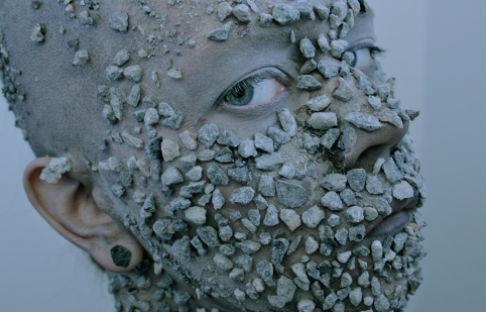One of the world’s most southern arts communities has become an inspirational model for a fringe festival at the other end of the earth.
The collaboration started when three Swedish performers travelled to Melbourne for the 2002 Melbourne Fringe. Helena Bunker and Lina Karlmark, founders of Swedish performance arts group The Limaghe, brought their show No No Piruette to the Melbourne Fringe Festival. There they met another Swedish artist, Adam Potrykus, who lent a hand backstage, and together the team sold out shows and won Most Innovative Performance at the 2002 Melbourne Fringe Awards.
Their success in Melbourne town inspired the trio long after returning to Sweden. Feeling that Stockholm lacked the appropriate platforms for emerging artists, the Stockholm Fringe Festival (Stoff) was launched in 2010 as a modest three-day event with a budget of 2000 euros.
Stoff has grown consecutively ever since; 400 artists from 40 countries participated in the 2012 festival with over 1300 artist applications from 65 countries. As Scandinavia’s only fringe festival, the momentum is building as organisers prepare for the fourth year of Stoff. During this time the Melbourne Fringe Festival has played a significant role informing the program, style and delivery of Stoff.
So how did Melbourne’s longest running and most popular arts festival create this impact? And how are Australian artists and festival models perceived internationally in Stockholm, amongst the brimming cultural mix found within Europe and the UK?
Potrykus is well acquainted with the Australian independent arts, having spent most of the Noughties in Australia, studying film and mixed media at Melbourne’s Swinburne University and then RMIT. He feels the legacy of the Melbourne Fringe remains important alongside bigger (and closer) festival experiences such as the Edinburgh Fringe:
‘Out of the 300 festivals that operate worldwide, the two that we looked at closely were Melbourne and Edinburgh.’
‘Lots of things happen [at the Edinburgh Fringe] and it’s often hard to grasp. At the Melbourne Fringe you could be a student with no money and go to heaps of exhibitions, heaps of parties; you could just walk up to other artists and start a conversation. Without fail, you’d meet new people at every event and potentially start new collaborations, which is exactly what we wanted for the Stockholm Fringe Festival.’
‘Stoff had to be very accessible,’ continues Potrykus. ‘Most events are free and operate as a platform for cross disciplinary art forms – In Edinburgh you’ll find primarily comedy and theatre whereas in Melbourne, a greater variety of arts and genres are represented in the festival and that’s how we like to have things at Stoff.’
Potrykus acknowledges the significance of Australian audiences who are willing to embrace new ideas. He was surprised by the ‘anything goes’ mentality of Australian punters, where an idea could be alternative, middle of the road or play to half empty houses, yet still penetrate the curiosity of a primarily sports crazy culture.
‘It’s very important and it’s the role of the fringe, which is done well in Melbourne, to criticize the world that we live in – and to take the piss out of it.’
During his time in Melbourne, Potrykus also became involved with the production team behind Aussie disco-punk band The Blow Waves. The European curiosity for the Australian ‘anything goes’ attitude became very clear when the band toured Europe in 2009 – audiences lapped up their performances.
Over the four years of the Fringe, Swedish audiences have embraced Australian artists including Benjamin Bennett (2010) and Skye Gellmann and Naomi Francis (2011). The duo featured on the programme cover and received widespread coverage in TV and print media.
‘Europeans are always curious about Australia’, says Potrykus. ‘Aussies are quite popular in general, and the association with cheesy stereotypes like koalas and kangaroos makes for a unique experience when audiences see amazing and alternative Australians performance art.’
In his role as Head of International Projects and Artists for Stoff, Potrykus encourages Australian artists to make the trek to Stockholm to engage with new audiences and seek international collaborations.
‘It’s important for independent Australian artists and Australia to be represented at one of the biggest independent arts events in the Northern Hemisphere’.
Unlike many festivals, Stoff covers venue hire, provides technicians to every show, and issues artists passes to participants. As an open access festival anyone is invited to apply.
Evidently, the main challenge for Australian artists wanting to take part in the program has been the cost of flights and accommodation. Festival organisers remain unsuccessful in securing funding from the Australian embassy in Stockholm, yet are determined to create pathways for Australian artists. One such opportunity includes Swedish arts funding, currently available for Australians who might decide to collaborate with a Swedish artist.
Stoff 2012 started a dialogue with several Australian fringe festivals to establish an exchange program, similar to existing arrangements with Sopot Fringe in Poland, Prague Fringe and the Amsterdam Fringe.
‘We have awards at Stoff where artists can tour works at these festivals and we’d like a similar award developed for 2014, where European artists can travel to Australia,’ says Potrykus. ‘We hope to eventually give Australian artists the opportunity to come to Stoff, particularly Adelaide and Melbourne Fringe.’
With a site-specific focus, the 2013 program hopes to entice audiences with a mix of theatre, art, photography, dance and mixed media, including digital works streamed live from locations globally. Young Stoff has been established for emerging artists aged 15-25 alongside Stoffnet as an international conference featuring a mix of industry focused workshops, debates and artist speed dating.
The 2013 Stockholm Fringe Festival will be held from Aug 21 to 24. Applications are now open for groups and individuals and close Feb 2. Australian artists seeking Swedish funding grants or with general inquiries are encouraged to contact organisers before applying by visiting the Stoff Website.




